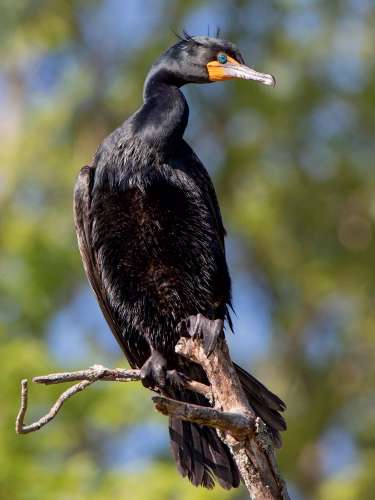In the Northeast, if you don’t live on the coast or in one of a few inland locations where double-crested cormorants breed, you will probably only see these large birds as they pass through during migration. At first glance, they aren’t especially eye-catching: blackish brown, a bit gangly, often perched with wings stretched out to dry. Double-crested cormorants’ eyes, however, are a brilliant turquoise color, and during breeding season the birds develop the tufts of feathers – or crests – on their heads for which they are named. Should you see one of these birds in spring, watch for it to open its beak – the inside of a cormorant’s mouth is also bright turquoise at this time of year, although that coloring fades after breeding season.
Double-crested Cormorants in Breeding Season
No discussion as of yet.
Leave a reply
To ensure a respectful dialogue, please refrain from posting content that is unlawful, harassing, discriminatory, libelous, obscene, or inflammatory. Northern Woodlands assumes no responsibility or liability arising from forum postings and reserves the right to edit all postings. Thanks for joining the discussion.


